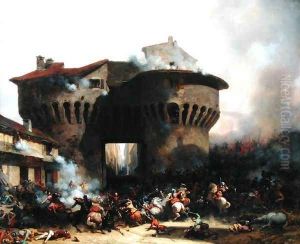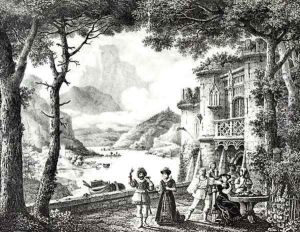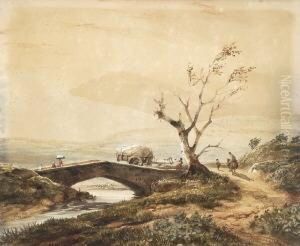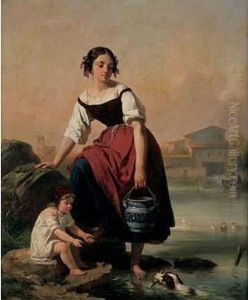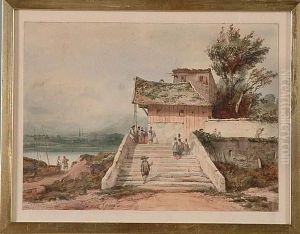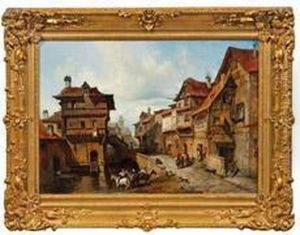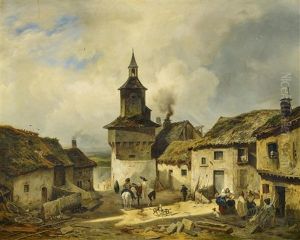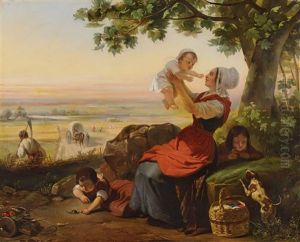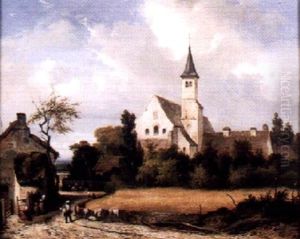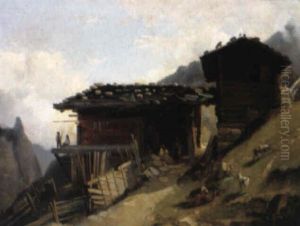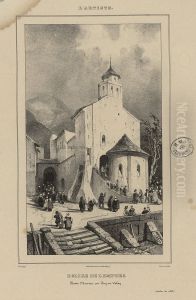Julien-Michel Gue Paintings
Julien-Michel Gué was a French painter born on January 21, 1789, in Paris. He is known for his historical and genre paintings. Gué's artistic journey began under the tutelage of renowned neoclassical painter Jacques-Louis David. This mentorship provided him with a strong foundation in the neoclassical style, which was characterized by its emphasis on clarity, order, and harmony, as well as its inspiration from classical art and literature.
Throughout his career, Gué exhibited at the prestigious Paris Salon, the official art exhibition of the Académie des Beaux-Arts in Paris. His works were well-received, and he gained recognition for his skillful use of light and composition, as well as his ability to convey narrative and emotion through his paintings. Notable works by Gué include 'The Death of Caesar,' which is reflective of his interest in historical subjects, and 'Les Jeunes Grecs faisant battre des coqs,' a genre painting that depicts young Greeks engaging in a traditional game.
Gué's career unfolded during a period of significant political and social change in France, marked by the turmoil of the French Revolution and the subsequent shifts in power between various regimes, including the Napoleonic era and the Restoration. His neoclassical style, which initially flourished under the patronage of the French Empire, had to adapt to the changing tastes and political climates of his time.
Despite facing the challenges of an evolving art market, Gué maintained a respected position within the French art world. He was awarded the Légion d'Honneur in 1830, a testament to his contributions to French art and his status among his contemporaries. Julien-Michel Gué died on October 14, 1843, in Paris. His legacy is preserved through his works that continue to be studied and appreciated for their technical mastery and historical value.
